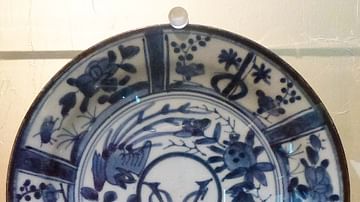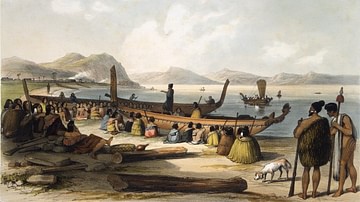Review

| Rating: | |
|---|---|
| Title: | Australianama: The South Asian Odyssey in Australia |
| Author: | Samia Khatun |
| Audience: | University |
| Difficulty: | Medium |
| Publisher: | Oxford University Press |
| Published: | 2019 |
| Pages: | 288 |
This book is a research monograph that tells the history of South Asian migration and the "aboriginal" community during the British colonisation of Australia. The author uses a storytelling strategy, and this book is worth reading for its interdisciplinary approach. The unique side of this book is using non-English sources, including "Kasasol Ambia." Scholars, students, and the general public interested in migration and ethnic studies will be benefitted from the book.
Australianama: The South Asian Odyssey in Australia is a research monograph that tells the history of South Asian migration and the "aboriginal" community during the British colonisation of Australia. Concerning Australian social and cultural history side by side, this book is worth reading for its interdisciplinary approach. Scholars, students, and the general public interested in migration and ethnic studies will be benefitted from the book. Australianama proposes a fresh look at the monolingual sources of Australian history. The book narrates the glimpses of travellers who might be able to connect 19th-century Bengal to Australia.
Before writing this book, Samia Khatun was a filmmaker whose documentaries were screened on SBS-TV and ABC-TV. Born in Dhaka, she migrated to Australia with her family at an early age. Now, she is Senior Lecturer at the University of London, focusing on the experiences of colonised peoples in South Asia and Australia.
The author has designed the book thematically into eight chapters. In Chapter One, Samia Khatun develops her main arguments, pointing out some shortcomings of the sources of Australian history and emphasising the importance of non-English sources. The author claims that Australian historians systematically sidestep non-English sources in writing Australian colonial history.
For example, Australian historians, including Christine Stevens, suggested that "Afghan" came to Australia from Afghanistan and North-Western India, and they worked as camel drivers. However, Khatun found a book titled Kasasol Ambia in a small red mosque in the desert town of Broken Hill. It was written in Bangla (the national language of Bangladesh and some parts of India) and printed in Kolkata. Therefore, Khatun has questioned the ethnic identity of so-called "Afghan" migrants. If the "Afghan" ethnicity constituted camel drivers in Australia, how did a book published in Bengal find its way to an inland Australian mining town?
When the Broken Hill locals wiped Kasasol Ambia of sand in the 1960s, the book was tagged in English as the "Holy Koran." However, Khatun discovered that the book was not a Quran but a 500-page volume of Bengali Sufi poetry – a "book of books." This began Khatun's pursuit of an answer to how the book travelled and was brought there. It is a fascinating story and an entry point of Australian history. Thus, Khatun has brilliantly enriched the writing of Australian history through her use of non-English sources.
In writing other chapters, Khatun uses storytelling strategies to present the transnational history of South Asians in Australia, which contains themes like travel, trade, close contact, and intermarriage with Aboriginal communities, particularly Wangkangurru, Kuyani, Arabunna, and Dhirari. Aboriginal people narrated their experiences, upheaval, and violence in the wake of British colonisation. In their narratives, the experiences of South Asian migrants are predominant. Khatun shows that South Asians and Aboriginal people were needed in the British colonial economy, particularly in railway construction, sugar farming, steam shipping, pastoral industries, and camel transportation. In the book's last chapter, entitled "To Hear," Khatun tells the history of her own family migration and puts her story within the vast terrain of South Asian odysseys.
Khatun’s writing style and accuracy are excellent. The unique side of this book is using non-English sources, including Kasasol Ambia. From family conversations and scouring handlists to tracing the spatial trajectory of the Kasasol Ambia, the author shows the Bengali migration to decipher how the Bengali book got to Broken Hill. A good complementary read to this topic, written before Khatun’s book, is Devleena Ghosh's essay "Under the Radar of Empire: Unregulated Travel in the Indian Ocean" published in Journal of Social History in 2011.
Samia Khatun skilfully weaves an intricate patchwork of hitherto unexplored connections between South Asia and Australia that ultimately led to the South Asian diasporas and identity across various borders and interiors throughout the Indian Ocean world. Australianama consists of 29 wonderful illustrations with rich text. This is a must-read book in which academic scholarship, investigatory work, and colourful storytelling coalesce.
About the Reviewer
Cite This Work
APA Style
Rahman, G. M. (2023, June 07). Australianama: The South Asian Odyssey in Australia. World History Encyclopedia. Retrieved from https://www.worldhistory.org/review/360/australianama-the-south-asian-odyssey-in-australia/
Chicago Style
Rahman, Gazi Mizanur. "Australianama: The South Asian Odyssey in Australia." World History Encyclopedia. Last modified June 07, 2023. https://www.worldhistory.org/review/360/australianama-the-south-asian-odyssey-in-australia/.
MLA Style
Rahman, Gazi Mizanur. "Australianama: The South Asian Odyssey in Australia." World History Encyclopedia. World History Encyclopedia, 07 Jun 2023, https://www.worldhistory.org/review/360/australianama-the-south-asian-odyssey-in-australia/. Web. 30 Jun 2025.




